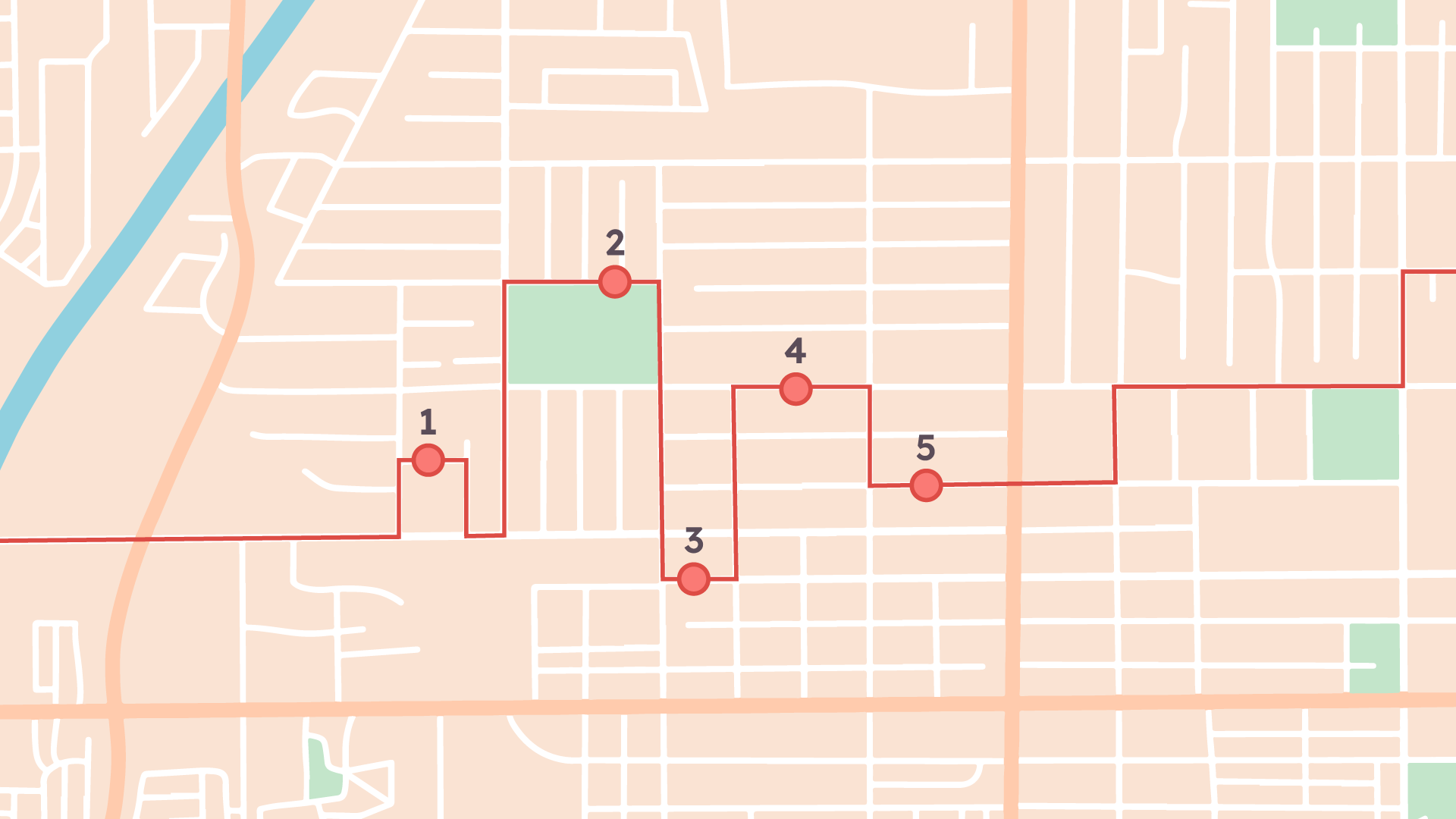Today, let’s play a round of Dares Only, where we dare you to find out how your patients learned about you, where they booked their appointment, how much money they brought into your practice, and how much you spent to bring them in.
Successfully tracking and reporting on healthcare marketing efforts can take a lot of work and patience. HIPAA regulations and other data privacy laws often limit the ability to connect healthcare marketing campaigns to patient acquisition and revenue directly—so much so that healthcare providers come to rely on vanity metrics like social media impressions, likes, and shares to measure the impact of their marketing. Sound familiar?
While these metrics can offer some insight into brand awareness, they fall short of revealing the true financial success of your healthcare marketing campaigns, leaving your team hesitant to invest further in marketing.
To grasp true marketing success, you must move beyond this superficial understanding and turn to healthcare marketing metrics that directly reflect the financial health and effectiveness of your marketing strategies. You guessed it, we’re talking KPIs.
Strap in, Sherlock, as we are about to uncover which healthcare marketing metrics are essential to your healthcare business success and how you can compliantly track and apply them to your future endeavors. Let us begin!
1. Patient Acquisition Cost (PAC)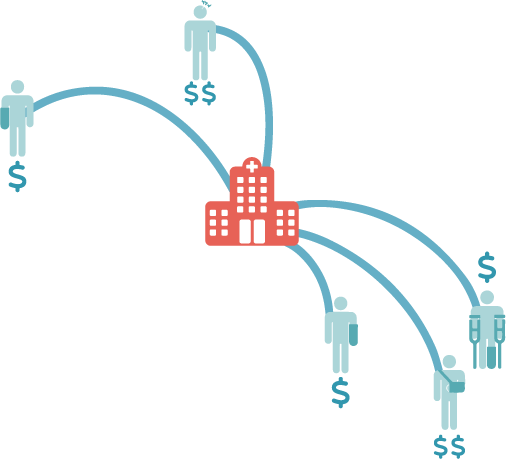
The first healthcare marketing metric on our list is Patient Acquisition Cost, popularly known as PAC in the marketers’ circle where we thrive on acronyms, coffee, and tight deadlines.
What is Patient Acquisition Cost?
PAC represents the total cost of acquiring a new patient, including all marketing and advertising expenses.
How to Track PAC?
To calculate PAC, you can use a simple, old formula: total marketing expenses divided by the number of new patients acquired over a specific period.
However, this formula comes with its flaws: not all marketing channels bring in patients at the same price. So, to know which channels and strategies bring patients at the lowest cost, you need to apply data segmentation and marketing attribution strategies.
Marketers rely on CRM and marketing automation software to segment and track these costs efficiently and accurately, but due to HIPAA regulations in healthcare marketing, we must turn to healthcare-specific marketing software.
Why is PAC important?
Understanding PAC is a vital healthcare marketing metric for determining the efficiency of campaigns and calculating the Return on Investment (that we’ll later discuss).
A lower PAC indicates more cost-effective marketing strategies, allowing healthcare providers to allocate resources more efficiently.
How to Apply PAC Data to Your Strategy?
Evaluate the cost-effectiveness of different marketing channels by comparing their PACs. Focus on channels and campaigns with lower PACs to optimize the marketing budget. Continue to adjust and refine marketing strategies to reduce your PAC and improve ROI.
2. Patient Lifetime Value (PLV)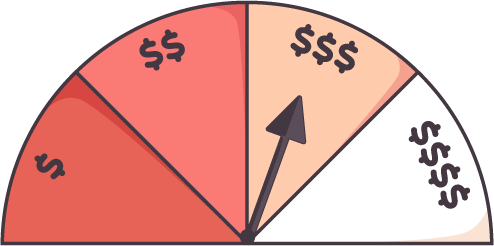
The second healthcare marketing metric that is essential to your healthcare business success is Patient Lifetime Value, a.k.a. PLV. Without further ado…
What is Patient Lifetime Value?
Patient Lifetime Value is a healthcare marketing metric that shows the total revenue your practice expects to earn from a patient throughout their relationship with the practice.
How to Track Patient Lifetime Value in Healthcare?
Calculate your PLV by multiplying the average value of a patient’s visit by the number of visits per year and the average duration of the patient relationship.
You can rely on your PM/EHR software and financial records to gather accurate data, but you can also use a healthcare-specific marketing platform that offers HIPAA-compliant PM/EHR integrations to automate the process and get a more accurate picture of your essential healthcare marketing metrics.
Why Is PLV Important in Healthcare?
Knowing your Patient Lifetime Value helps allocate marketing resources efficiently by focusing on retaining high-value patients. It also provides a benchmark for how much to spend on acquiring new patients.
Patients suffering from chronic diseases or needing complex surgeries have a much higher PLV than patients coming in for a one-time consultation, so it’s worth investing more money in pursuing them.
For example: if PLV is $3,000, it makes sense to invest $300 in attracting this patient. However, for patients whose PLV is $300, investing $300 helps you barely break even.
How to Apply PLV Data to Your Strategy?
Analyzing PLV will help you identify and target high-value patients. Invest in retention strategies, such as personalized marketing and loyalty programs, to maximize the revenue derived from each patient and increase your PLV. Tailor your healthcare marketing efforts to attract patients with higher PLVs. You can achieve this by applying predictive targeting in healthcare.
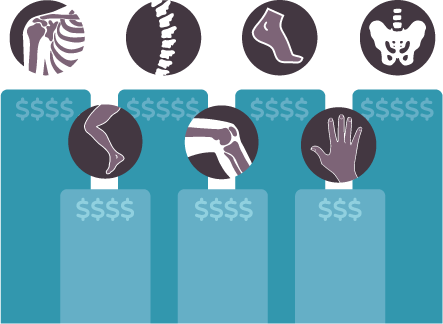 3. Conversion Rate
3. Conversion Rate
Hopping to our third essential healthcare marketing metric: conversion rate. We know you know about the fuss, so let us demystify it for you!
What Is Conversion Rate in Healthcare Marketing?
The conversion rate in healthcare is the percentage of potential patients who take a desired action, such as booking an appointment, after engaging with a marketing campaign.
How to Track Conversions in Healthcare?
Calculate your conversion rate by dividing the number of conversions by the total number of visitors or impressions and multiplying by 100.
For example, if you put out a Facebook ad for the annual check-up appointments, and 1,000 people see it, while 50 people click on the ad and book the appointment, your ad campaign conversion rate will be 5%.
Seems simple enough, right? But this is where things get complicated: what if a potential patient sees your ad, continues scrolling without taking action, and then, a few days later, informed by the ad, visits your website organically or simply makes a call to book the appointment?
While we can’t read people’s minds, what helps us track conversions as precisely as possible and perform accurate marketing attribution are CRM systems and marketing software. Tracking conversions in healthcare can be challenging due to HIPAA, so opting for a healthcare-specific marketing platform that offers conversion-tracking features is the wisest choice.
Why Is Conversion Rate Important in Healthcare?
Conversion rates measure the effectiveness of marketing strategies in driving patient actions, highlighting areas for improvement in the patient journey. If tracked properly, you can learn how to optimize each marketing channel to maximize positive outcomes. Sometimes, even the color of the button can positively influence your conversion rates. Shocking, right?
How to Apply Conversion Data to Your Strategy?
Analyze conversion rates across different campaigns and channels to determine which are most effective. This will help you optimize landing pages, calls-to-action, and overall user experience to improve conversion rates. Finally, understanding which campaigns yield the best results will help you make data-informed marketing decisions and prioritize high-converting campaigns in the future.
 4. Healthcare Marketing Return on Investment (ROI)
4. Healthcare Marketing Return on Investment (ROI)
Here we are: the three letters that make all marketers and finance bros jump… R O I. If you’re unfamiliar with this healthcare marketing metric, you’ve either just arrived from a secluded life in a wild forest, or… well, we have no other explanation. Let’s get to it!
What is Healthcare Marketing ROI?
Simply put, healthcare marketing ROI measures the revenue generated from marketing activities divided by the cost of those activities.
How to Track Marketing ROI in Healthcare?
Similarly to conversions, calculate your healthcare marketing ROI by dividing the revenue attributed to marketing efforts by the marketing costs and multiplying by 100.
In theory, you could do this manually, but let’s face it: you’re simply not going to. Following the logic we’ve established so far, your educated guess is: use a healthcare-specific marketing platform.
So why do we insist on relying on software so much? It isn’t simply because we sell one (to address the elephant in the room).
Looking at examples, healthcare marketing metrics seem simple enough to track and calculate, so much so that you could do it on your lunch break. In reality, and at scale, the situation is far more complex: the more channels you use, the more potential patients engage with your brand, and the tougher it is to track any efforts without relying on software.
Scratch tougher, it’s literally impossible.
Uniting your efforts within one healthcare-specific platform, you can centralize your campaign management and tracking, gather comprehensive data, and get concrete, well-segmented insights into your marketing performance.
Why Is Marketing ROI Important in Healthcare?
This healthcare marketing metric directly assesses the profitability and effectiveness of your marketing efforts. High ROI indicates successful strategies and helps you ensure your financial resources dedicated to marketing are well spent.
How to Apply Healthcare Marketing ROI Data to Your Strategy?
Regularly evaluate the ROI of different marketing campaigns and channels. Focus on strategies that deliver the highest ROI. Try optimizing or consider discontinuing low-performing campaigns with insights provided by other sets of data to maximize overall profitability and impact.
5. Patient Satisfaction and Net Promoter Score ® (NPS ®)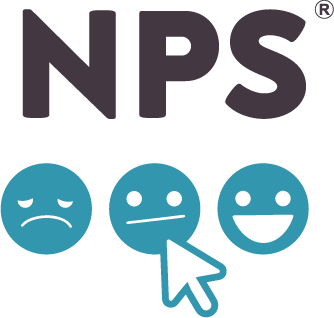
Finally, we’re at the fifth healthcare marketing metric essential to your healthcare business growth. Choosing the fifth metric wasn’t easy (you bet this was as fun and excruciating for us as carefully crafting a road trip playlist!), but we couldn’t pass up the patient’s say in your success. Therefore, we opted for patient satisfaction and one of the most popular surveys that help measure it: the Net Promoter Score ®.
What Are Patient Satisfaction Surveys and NPS ®?
Patient satisfaction surveys measure patient experiences throughout various formats, from CAHPS to PROs and NPS ®. While CAHPS and PROs go into the treatment details, NPS ®, or Net Promoter Score ®, reports on the likelihood of patients recommending your practice to others.
How to Track Patient Satisfaction and NPS ® in Healthcare?
Conduct regular patient satisfaction surveys and calculate NPS ® by subtracting the percentage of detractors from the percentage of promoters. To simplify the process, ensure data privacy, and increase the number of completed surveys, use HIPAA-compliant survey tools and feedback platforms that provide a seamless user experience for your patients while ensuring you get automated data segmentation and reporting on conducted surveys.
Why Are Patient Satisfaction and NPS ® Important in Healthcare?
High patient satisfaction and NPS ® scores indicate positive experiences, leading to more referrals and a better reputation—both crucial for long-term growth. On the other hand, non-satisfactory scores can direct your attention toward critical aspects of your services and help you adapt your approach in a patient-centric way.
How to Apply Patient Survey Data to Your Strategy?
Use patient feedback to identify areas for improvement in patient care and service delivery. Steer your business plan towards the changes based on this feedback to improve patient satisfaction. To take it a step further, leverage high NPS ® scores and positive patient testimonials in marketing materials to build trust and attract new patients.
What about Other Healthcare Marketing Metrics?
Look, no marketing metric is completely useless. In the digital world, each action is accompanied by a metric—or a set of them—that informs you of the action’s success. These metrics are useful on a micro level and they can inform smaller decisions.
For example, social media likes, shares, and impressions can help you analyze your brand awareness efforts and inform you which types of content perform well with your target audience.
Website traffic and engagement metrics are valuable for understanding user behavior and preferences, but it’s important to note that popular website performance tracking tools, such as Google Analytics 4, may not be HIPAA compliant. Instead, explore HIPAA-compliant analytics tools to monitor these metrics.
Streamlining Detailed Tracking of Essential Healthcare Marketing Metrics
Tracking key performance indicators (KPIs) is crucial for healthcare providers looking to move beyond vanity metrics and gain a deeper understanding of their marketing success. By focusing on these essential healthcare marketing metrics, you open the space for making data-driven decisions that improve the efficiency, effectiveness, and overall financial health of your healthcare business.
Leverage SocialClimb’s comprehensive healthcare marketing platform to streamline the process of marketing tracking and reporting. This contemporary, HIPAA-compliant array of tools enables healthcare providers to conduct holistic campaigns in a centralized, streamlined, and automated way, with detailed reporting on all aspects of their marketing efforts.
Remember: diligent and precise tracking of essential healthcare marketing metrics will help you revolutionize your healthcare marketing strategy and achieve measurable success.

